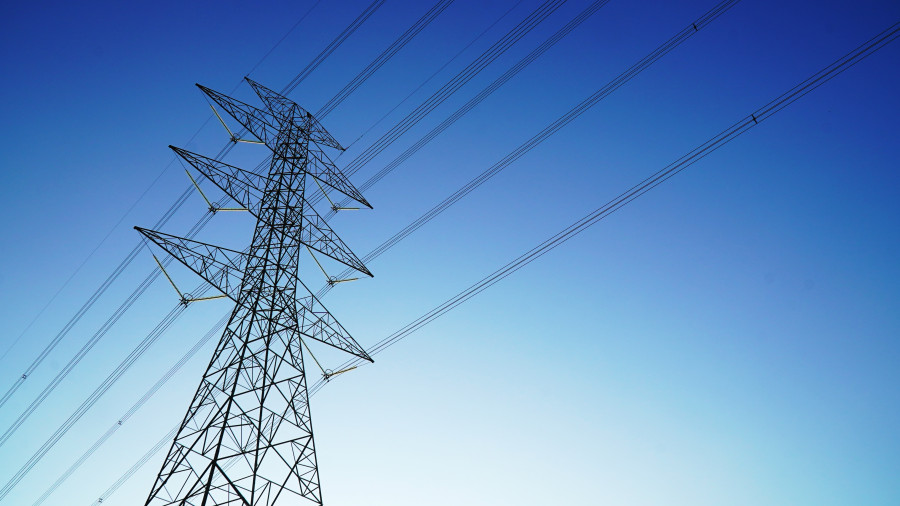Columns
Nepal’s ambitious energy vision
Diversifying renewable energy sources beyond hydropower is essential for energy security.
Anwit Pokharel
Nepal is on an ambitious trajectory to revolutionise its energy sector by aligning it with the core of national development and climate action. A review of major national development documents and policy frameworks reveals a strong and consistent prioritisation of energy development, driven by goals of sustainability, energy supply security, economic growth and environmental stewardship. However, this bold vision faces alarming challenges that demand strategic, cross-cutting and coordinated action.
Energy development is a common agenda that runs through the periphery of development planning and policies. The 16th National Plan aims to achieve 100 percent electrification within a couple of years, accompanied by a substantial increase in installed capacity. Ambitions have been set to increase the energy sector’s contribution to minimising the trade deficit, with a target of raising its contribution from 0.9 percent to 4 percent by FY 2028-29.
Nepal’s commitment to achieving net-zero emissions by 2045, as outlined in the Long-Term Strategy and Second Nationally Determined Contribution, immediately prioritises a clean energy transition. The Nepal Energy Development Roadmap 2081 envisions addressing self-reliance in electricity and transforming the country into a major energy exporter by promoting hydropower and electrification through alternative forms of energy. This is deemed to be achieved within the bounds of promoting sustainable practices and building resilience against climatic disasters, as articulated in the National Adaptation Plan 2021.
Current energy landscape
The current status of energy in Nepal is a complex blend of progress and persistent challenges. While the electricity generation capacity had grown to around 3,200 MW as of FY 2023-24, driven mainly through hydropower, a significant part of rural households still depends on traditional biomass consumption for cooking (61 percent), while transportation (14.3 percent) and urban cooking (9.3 percent) rely on imported fossil fuel. During the rainy season, there is a surplus of electricity that can be exported to India and Bangladesh, but the dry season requires imports. While the power grid has been extended to a major portion of the country (732 out of 753 local levels), the per capita electricity consumption remains relatively low at 380 kWh. The contribution of renewable energy sources other than hydropower to the national grid is modest, at less than 5 percent; thus, there is a need for diversification in the energy mix to achieve a sustainable, climate-resilient future.
Powering into the future
The country harbours very bold and transformative ambitions for its energy sector. Indeed, the country aspires to achieve 100 percent renewable energy by 2050, with simultaneous efforts toward full electrification. Nepal plans to increase its installed electric power capacity to 11,769 MW by FY 2028-29, with further expansion to 28,500 MW by 2035. This will be further heightened to a per capita power consumption of 700 kWh by FY 2028-29 and 1,500 kWh by 2030.
Nepal is not attempting to put limitations on its energy growth, as it wants to become a major exporter of surplus power to neighbouring markets. Additionally, the country is poised to implement an intervention to increase the share of renewable energy (excluding large hydro power) to 10 percent of total installed capacity by FY 2028-29. Nepal has also committed to saving the environment by achieving net-zero emissions by 2045, recognising that if current unsustainable trends continue, CO₂ emissions from the energy sector are projected to rise significantly, to 19.6 million metric tons of CO₂ (mMtCO₂) in 2030 and 53.8 mMtCO₂ in 2050. The residential sector is expected to account for the largest share of energy-related emissions, followed by transportation and industry.
Hurdles to the vision
Nepal’s energy targets are faced with numerous interconnected challenges that can precariously hinder implementation. The inability to coordinate among three tiers of government, as well as with private and foreign investors, results in policy inconsistency and a mismatch in implementation. Poor transmission and distribution systems limit a reliable electricity supply and discourage the use of electric appliances among the people.
The country is also struggling to mobilise sufficient domestic and foreign investment required for robust energy infrastructure development. Nepal’s projected investment to develop the energy sector, as outlined in the National Adaptation Plan (NAP), is estimated at approximately $6 billion. However, the contribution from Nepal’s national budget remains relatively low. Development is also hindered by bureaucratic delays in project development, land acquisition, forest clearing and environmental studies. Nepal’s heavy reliance on hydropower makes it vulnerable to seasonal variations, which means more reservoir-based projects are needed to cover dry-season shortages.
Climate change poses a threat to these initiatives through the desiccation of water sources, increased siltation, and the risk of glacial lake outburst floods, which can damage existing and planned energy infrastructure. The absence of clear policy and regulatory guidelines, particularly for private sector participation, electricity trade and alternative forms of energy, creates uncertainty for potential developers and investors. Finally, the high capital expenditures of renewable energy technologies, combined with the shortage of qualified personnel and technical expertise, create obstacles to achieving Nepal’s energy transition vision.
Collaboration and implementation
The realisation of Nepal’s ambitious energy vision requires a collaborative effort from national and international stakeholders, as well as from investors. To elaborate, increasing inter-agency coordination, streamlining regulatory processes, fostering investment through a facilitative environment and prioritising the development of robust transmission infrastructure are critical steps. Furthermore, diversifying the renewable energy mix beyond hydropower and taking proactive measures to mitigate the effects of climate change will be crucial for long-term sustainability and energy security. By addressing these challenges strategically, Nepal can utilise its immense renewable energy potential to fuel its future, spur economic development and make a valuable contribution to the world’s climate objectives.




 22°C Kathmandu
22°C Kathmandu















